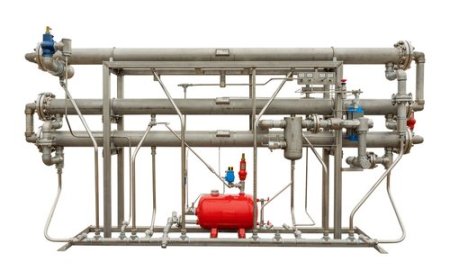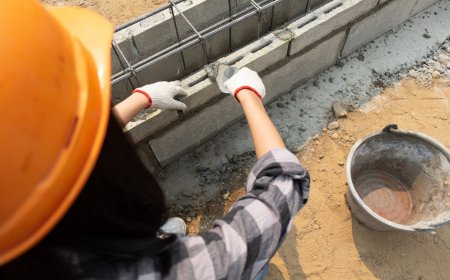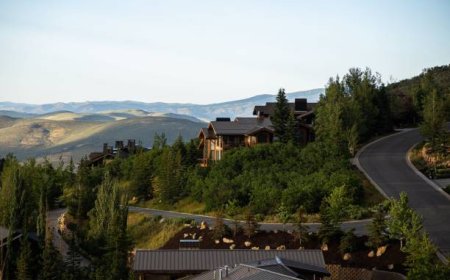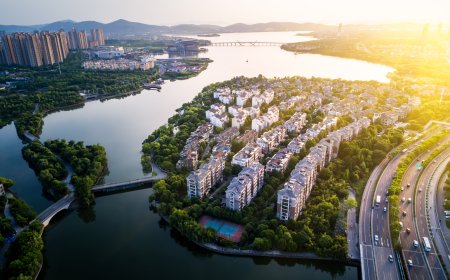How to Navigate Solo on the Everest Base Camp Trek: A Guide for Independents
Witness Mount Everest like never before on this epic trek to its base camp, surrounded by towering peaks and glaciers.

Trekking to Everest Base Camp (EBC) solo is a dream for many thrill-seekers who want to experience freedom and nature. While it can be tough both physically and mentally, its doable for solo travelers. If youre planning to go it alone, youll need to prepare well and stay aware of your surroundings.
Start by looking into the trail. Everest Base Camp Trek The usual route begins in Lukla and goes through popular spots like Namche Bazaar, Tengboche, Dingboche, and Gorakshep. There are plenty of tea houses and lodges along the way, so you won't have to lug around a ton of camping gear. Just make sure to book in advance if you're going during the busy spring or autumn seasons.
Keep an eye on the weather and altitude. Make sure to take acclimatization days seriouslythis isn't something to skip. Altitude sickness can sneak up on you, especially when you're alone. Drink lots of water, take your time climbing, and pay attention to how your body feels.
Navigation is usually straightforward since the route is popular. Still, its a good idea to have a detailed map, a GPS app, and a portable charger. Local SIM cards can help in emergencies, but dont count on a great signal everywhere.
Dont forget that you need permits. Grab a TIMS card and the Sagarmatha National Park entry permit in Kathmandu before you fly to Lukla. Its also wise to have travel insurance that covers high-altitude hikes and emergencies.
Trekking solo to EBC can feel like a big personal achievement and offers some serious solitude. With the right planning and respect for the environment, you can have a safe and memorable adventure in the Himalayas.
Is It Safe to Trek to Everest Base Camp Solo?
Trekking to Everest Base Camp on your own can be safe if you're prepared and have some experience with high-altitude hikes. The trail is marked and gets busy during peak season, so you won't feel completely isolated. Still, be aware of issues like altitude sickness, sudden weather changes, and tiredness. Unlike going with a guide, you wont have support in emergencies, so it's important to have a local SIM card, emergency contacts, and GPS tools. Let someone know your plans and check in regularly. While you can manage safety on your own, know your limits, carry a basic first-aid kit, and keep a steady pace. It's a good idea to get travel insurance that includes evacuation coverage. With some caution and planning, you can have a secure and rewarding trip to EBC.
What Permits Do I Need for a Solo Everest Base Camp Trek?
If you're trekking solo to Everest Base Camp, you'll need two main permits: the Sagarmatha National Park Permit and the Khumbu Pasang Lhamu Rural Municipality Permit, which replaces the old TIMS card for this area. You can get these in Kathmandu or Lukla. The Sagarmatha permit costs NPR 3,000 for foreigners, while the Khumbu permit costs NPR 2,000. Always keep multiple copies of your passport and passport-size photos for applying. Your permits will be checked along the route, so have them handy in a waterproof pouch. Without these permits, you could face fines or be turned away from the trail. Apply in advance and keep digital backups for a smooth trip. Its best to plan so you dont run into issues.
How Do I Plan an Itinerary for Solo EBC Trekking?
Planning a flexible but realistic itinerary is essential for your solo trek to Everest Base Camp. A typical trek takes about 12 to 14 days, including acclimatization stops in Namche Bazaar and Dingboche. You start with a flight from Kathmandu to Lukla, then move on to Phakding, Namche, Tengboche, Dingboche, Lobuche, Gorakshep, and finally EBC. Acclimatization is important; skipping it puts you at risk for altitude sickness. Make sure to leave some buffer days for bad weather or fatigue. Think about how far you can walk each day, usually around 5 to 7 hours, and dont overdo it. Consider possible flight delays to and from Lukla when planning your return. Use trekking apps like Maps.me or Gaia GPS to help with navigation. Your itinerary should balance ambition with safety, allowing for some spontaneity while staying mindful of how to stay healthy at high altitudes.
Where to Stay on the Everest Base Camp Trek Solo?
There are plenty of tea houses and lodges along the EBC route, making it easy to find a place to stay as a solo trekker. Most villages have several options, from shared rooms to more comfortable private accommodations. In the off-season, you can usually find space, but during spring (MarchMay) and autumn (SeptemberNovember), it's smart to book ahead in busier areas like Namche or Dingboche. You might pay a bit more for a private room, but many places offer free lodging if you eat dinner and breakfast there. Check for clean bedding, good toilets, and hot meals. Bring a sleeping bag for extra warmth and hygiene. Most lodges charge for hot showers and device charging. Staying solo gives you a chance to meet other travelers and locals while still maintaining your independence.
What Gear Do I Need for a Solo Trek to EBC?
Packing the right gear is key when trekking solo to Everest Base Camp. You need lightweight and reliable equipment since you'll be carrying everything yourself. Make sure to have a warm sleeping bag rated for -10C or lower, waterproof layers, thermal clothing, trekking poles, a headlamp, sunglasses, gloves, and a down jacket. Your footwear should be well-broken-in trekking boots with good ankle support. Dont forget a first-aid kit, altitude sickness meds, water purification tablets, and high-energy snacks. A power bank or solar charger for your devices is also important. Its wise to bring a physical map as a backup in case your GPS fails. Layer your clothing since temperatures can change a lot from day to night. Aim to keep your pack weight between 10 to 12 kg to stay comfortable. With careful planning and the right gear, you can have a safe and enjoyable trek.
Dealing with Altitude Sickness When Trekking Alone
Altitude sickness, also known as Acute Mountain Sickness (AMS), can be a real problem when hiking to Everest Base Camp, especially if youre on your own. You might experience headaches, nausea, dizziness, and shortness of breath. Being solo means you need to pay extra attention to how you're feeling. The best way to avoid AMS is to go up gradually, drink plenty of water, and take some acclimatization days at places like Namche Bazaar and Dingboche. Steer clear of alcohol and dont push yourself too hard at first. It's smart to bring medication like Diamox and know how to use it. If you start to feel worse, head down right awaydont try to tough it out. Stay in touch with folks back home or other trekkers, and think about using apps that can check your oxygen levels. Remember to trust your body. Trekking solo doesnt mean you should take unnecessary risksyour safety at high altitudes should always come first.
Eating and Drinking on Your Solo EBC Trek
Keeping your energy up and staying hydrated is key during the Everest Base Camp trek, especially when you're by yourself. Tea houses serve a variety of food like dal bhat (lentils and rice), fried rice, noodles, soups, and some snacks. Dal bhat is a great choiceit's filling, packed with carbs, and you can get free refills. Try to avoid meat above Namche Bazaar, since its often not stored properly. Stick with vegetarian meals to lower the chances of getting sick from food. Make sure to drink about 34 liters of water every day and always purify it with tablets or filters. Pack high-calorie snacks like nuts, protein bars, or chocolate for quick energy boosts. Its best to skip alcohol and caffeine at high altitudes since they can dehydrate you and make it harder to acclimatize. If youre trekking solo, consider bringing electrolyte powders and basic digestive meds. Smart choices about food and drink can help keep your trek safe and enjoyable.
Do You Need a Guide or Porter When Trekking Solo?
Its up to you whether to hire a guide or porter for the EBC trek, but it might be a good idea. A guide can help with safety, give insights into local culture, and assist with navigation, especially during tough weather or off-seasons. A porter can carry your heavy gear, so you can save your energy. On the other hand, if you decide to go solo without help, youll have the freedom and flexibility to do things your way. If you go completely solo, be sure about your planning, fitness level, and how to handle emergencies. Some solo trekkers choose to hire a porter-guidea person who can do both roles. The cost usually ranges from $20 to $30 per day. Whether you get help or not, make sure to respect the trail and plan well. Your choice will depend on how you like to trek and your experience level.
Staying Connected and Navigating as a Solo Trekker
Staying connected while trekking alone to EBC is much easier these days. NCELL and NTC SIM cards have some coverage along the route, especially in towns like Namche and Dingboche. You can buy a SIM card in Kathmandu and add data for emergencies. Some lodges also have paid Wi-Fi (Everest Link), but it can be slow and unreliable. For navigation, download offline maps on apps like Maps.me or Gaia GPS before you start. A power bank or solar charger is a good idea to keep your devices charged. Set daily goals on a map and frequently check your route. Carry a compass and a physical map just in case. Let someone know back home about your daily plans and check in when you can. Good navigation and communication tools can help ensure your solo trek goes smoothly.
Best Time to Trek to Everest Base Camp Alone
The ideal times to tackle a solo trek to Everest Base Camp are in the pre-monsoon (March to May) and post-monsoon (late September to November) seasons. During these times, the weather is generally stable, the skies are clear, and the trails are busy, which means help is usually close by. Spring brings blooming rhododendrons and warmer days, while autumn offers cool air and stunning mountain views. Its best to avoid the monsoon season (June to August) because of slippery paths, leeches, and poor visibility. Winter (December to February) can be freezing and dangerous for solo trekkers due to snow-covered trails and fewer people around. If you're hiking alone, its wise to plan for the busier months, both for better weather and to have more people around for safety. Be sure to book flights and lodges in advance during peak times to make your journey more enjoyable and safer.
Can I do the Everest Base Camp trek alone?
Yeah, you can trek to Everest Base Camp by yourself. A lot of people make the trip independently without a guide or porter. The trail is easy to follow, and there are plenty of fellow trekkers, especially during busy seasons. There are tea houses along the way where you can grab food and find a place to stay, making it doable for solo trekkers. Just keep in mind that solo trekking takes some extra planning for things like acclimatizing, navigating, and being aware of altitude sickness. Be sure to have the necessary permits, a GPS map, emergency contacts, and some basic medical supplies. With good prep, going solo on this trek can be safe and very rewarding.
Do I need a guide for the Everest Base Camp trek?
You dont have to have a guide for the Everest Base Camp trek, but many people prefer to hire one for extra safety and knowledge about the culture and route. Trekking without a guide means you get complete independence, but you need to be sure of your trekking skills and fitness level. If its your first time dealing with high altitude or visiting Nepal, having a guide can improve your experience. Still, experienced trekkers can manage the route on their own since the path is well-trodden and places to stay are easy to find.
How do I prepare for Everest Base Camp?
Getting ready for the EBC trek is important, especially if you're going solo. Start preparing about 2 to 3 months in advance with cardio exercises, strength training, and long hikes to build your stamina. Make sure you have layered clothing, waterproof boots, and a good sleeping bag. Familiarize yourself with altitude sickness and plan a 12 to 14-day itinerary with time to adjust to the altitude. Book your flights to Lukla early, get your permits sorted, and pack smart but light. Mental preparation is key tootrekking by yourself means you need to pace yourself, stay aware, and make decisions on your own. Being well-prepared will boost your confidence on the trail.
Can you trek to Everest Base Camp unguided?
Yes, you can do the Everest Base Camp trek without a guide. The path is well-marked and gets a lot of traffic each season. There are tea houses at all major stops, so you wont need to carry camping gear. Just remember to handle your permits, plan your route, and keep an eye on your health, especially with altitude sickness. Using navigation apps, offline maps, and picking up some basic Nepali can make your experience better. Trekking without a guide gives you freedom and some solitude, but it also means you need to be self-reliant and prepared.
















































